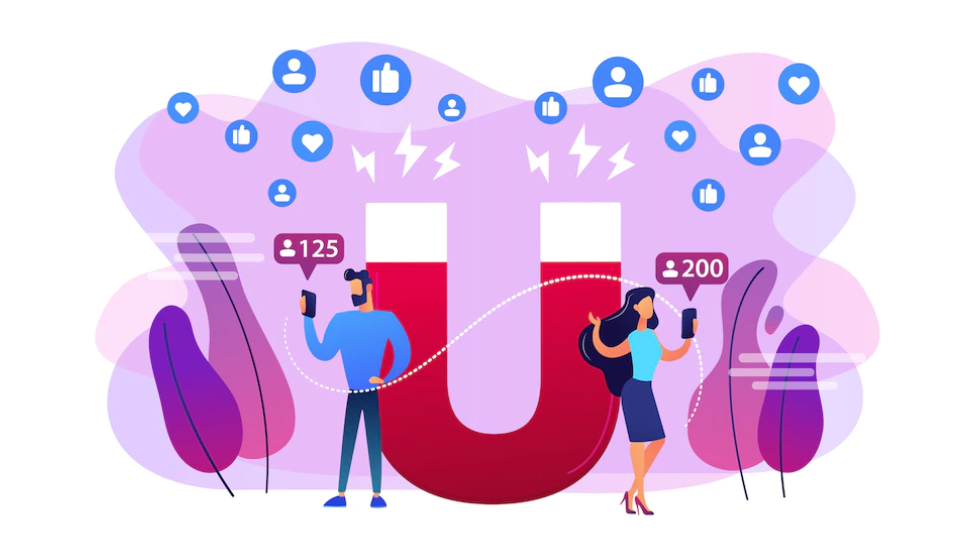Customer Acquisition Cost vs. Customer Lifetime Value (Full Comparison)
One of the main challenges that eCommerce businesses face in today’s competitive market is acquiring new customers. That is a challenge because the work does not end once you get a customer to complete a purchase. Take a minute to think about the following couple of questions.
Don’t you incur costs to acquire a new customer?
Don’t you think the revenue you get from this customer should be worth these costs?
The correct answer to both these questions is “YES,” and there are specific metrics to help you understand the undeniable interconnectedness between them.
This article examines the crucial interplay between the “Customer Acquisition Cost” metric, which measures the costs you incur to acquire new customers, and the “Customer Lifetime Value” metric, which measures the revenue you get from customers during the complete duration of their relationship with your business.
Keep reading this article for a complete comparison between these two metrics that includes definitions, ways to calculate, benefits, and more.
Table of content:
- Definition of Customer Acquisition Cost and Customer Lifetime Value
- How to Calculate Customer Acquisition Cost vs. Customer Lifetime Value?
- Benefits of Tracking Customer Acquisition Cost vs. Customer Lifetime Value.
- LTV to CAC ratio
Customer Acquisition Cost vs. Customer Lifetime Value (Full Comparison)
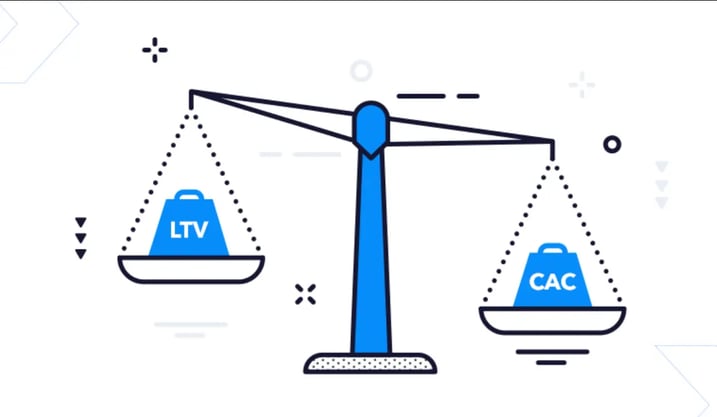 Image source: softwareequity.com
Image source: softwareequity.com
1- Definition of Customer Acquisition Cost (CAC) And Customer Lifetime Value (LTV)
- Customer Acquisition Cost (CAC) definition: CAC reflects the resources and costs incurred by a business to acquire a new customer. It shows the average amount of money a business has to spend to get a new customer. In other words, this metric reflects all the marketing, advertising, and sales expenses directed toward making sure a prospect converts into a paying customer.
- Customer Lifetime Value (LTV) definition: LTV is the average amount of money the business makes from each customer during the complete duration of their relationship with the business. In other words, this metric reflects the net profit that a business generates from a customer throughout their entire relationship.
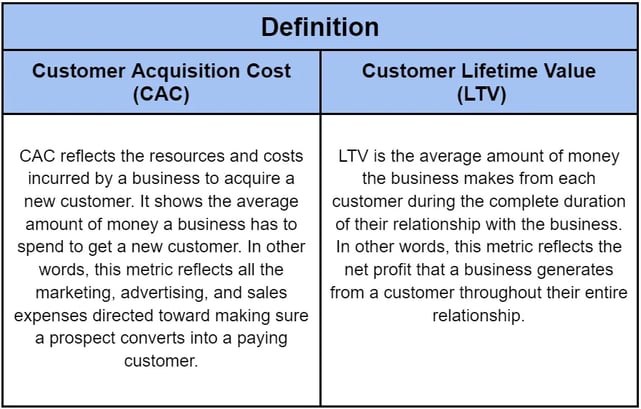
2- How To Calculate Customer Acquisition Cost vs. Customer Lifetime Value?
- Customer Acquisition Cost (CAC):
CAC is calculated as follows:
- Add up all the costs incurred to acquire a new customer (marketing, advertising, sales, salaries … etc).
- Divide the total cost by the total number of customers acquired.
- Customer Lifetime Value (LTV):
CLV is calculated by multiplying three things:
- Average Order Value.
- Average Purchase Frequency.
- Average Customer Lifespan.
 Image source: recosenselabs.com
Image source: recosenselabs.com
Indeed, the Customer Acquisition Cost metric and the Customer Lifetime Value metric are calculated separately; however, pairing them together is essential to understand what your Customer Acquisition Cost means for your eCommerce store.
3- Benefits Of Tracking Customer Acquisition Cost vs. Customer Lifetime Value
In this part of the article, we will explain why it is so important to track both your customer acquisition costs and your customer lifetime value. We will do this by discussing the significance and benefits of both metrics.
However, before diving into that, it is important to note that after thorough research and analysis, we concluded that it is not wise to separate the benefits of tracking CAC from the benefits of tracking LTV because they are very similar. This makes great sense since both metrics are very interconnected and interdependent. In other words, the two metrics complete each other.
Benefits of tracking Customer Acquisition Costs And Customer Lifetime Value:1- Analyzing And Boosting Return On Investment (ROI) : Tracking customer acquisition costs in light of the customer's lifetime value helps you keep an eye on your ROI. In other words, when you spend money to acquire a new customer, you are investing. That’s why you should always be sure that the return on that investment is worth it. The return here is reflected by the total amount of money you will get from the customer you acquire.
2- Evaluating Channels And Campaigns: When you track customer acquisition costs and customer lifetime value, you get to evaluate all your channels and marketing campaigns and identify which ones are profitable and which are not. This way, you get to allocate your budget and other resources more efficiently by spending your money on channels and campaigns yielding higher profits for your eCommerce store and letting go of the underperforming ones.
3- Customer Segmentation: Another benefit of regularly tracking your customer acquisition costs in light of customer lifetime value is that it allows you to target your customers more effectively. To better illustrate, measuring customer acquisition costs across different customer segments and identifying which ones offer a higher lifetime value will reveal which segments you should continue targeting and which ones you should give up on.
Speaking of customer segmentation, Converted.in offers a marketing automation tool that can easily segment your target audience without you exerting any effort. Tracking your CAC and LTV while using this automation tool will optimize your customer segmentation in the best way.
5- More Informed Decision-Making: Having a holistic view of the costs needed to acquire new customers and the long-term value that these customers will provide your eCommerce business helps you make more informed and strategic decisions. We are talking here about decisions that can affect the overall profitability and growth of your business, such as investment decisions.
6- Optimizing Customer Retention Strategies: As we said, using these two metrics helps you identify customers with high lifetime value. After that, you can invest in understanding these customers better and developing better retention strategies based on their behaviors, preferences, and buying patterns. This will eventually help you reduce your customer acquisition costs. Are you starting to see how closely related customer acquisition cost and customer lifetime value are?
7- Better Predicting And Forecasting: Another benefit that you get from tracking customer acquisition costs and customer lifetime value is that you become better equipped to make more accurate predictions and forecasts about your business. These two metrics provide useful insights into the future of your eCommerce store.
LTV To CAC Ratio
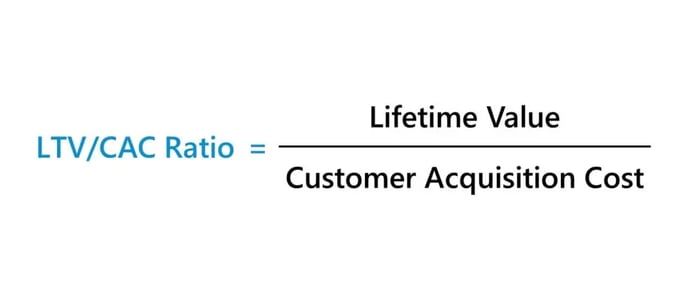 Image source: wallstreetprep
Image source: wallstreetprep
The Customer Lifetime Value (LTV) to Customer Acquisition Cost (CAC) ratio is a clear representation of the two metric’s close relationship that we’ve been talking about since the beginning of the article.
It is simply calculated by dividing the Lifetime Value by the Customer Acquisition Cost, and it measures the profitability of the business. In other words, this ratio helps you understand your customers’ overall spending on your products or services compared to how much you spent to acquire them in the first place. This ratio will help you determine whether you are over-spending on customer acquisition or under-spending.
Let’s explain this further with a hypothetical example:
- Company X is an eCommerce store that sells skincare products. In January 2023, the company spent $500,000 on marketing, advertising, and sales expenses. According to the number of new orders placed during that month, the number of new customers acquired was 1000 customers.
Given this data, the CAC can be calculated as follows: 500,000/1000 = $500 per customer.
Now, let’s assume that the company has an LTV of $1000; hence, the LTV to CAC ratio is calculated as follows: 1000/500 = 2.
This means that for every $1 spent on customer acquisition, the company gets $2 in revenue.
Conclusion: This company is performing well because, according to the LTV to CAC ratio, the money it makes from a customer is more than the money it spends to acquire them.
- Company Y is an eCommerce store that also sells skincare products. In January 2023, the company spent $500,000 on marketing, advertising, and sales expenses. According to the number of new orders placed during that month, the number of new customers acquired was 1000 customers.
Given this data, the CAC is $500 per customer.
However, this company found out that its LTV is $400; hence, the LTV to CAC ratio is calculated as follows: 400/500 = 0.8
This means that for every $1 spent on customer acquisition, the company gets $0.8 in revenue.
Conclusion: This company is NOT performing well because, according to the LTV to CAC ratio, the money it makes from a customer is less than the money it spends to acquire them.
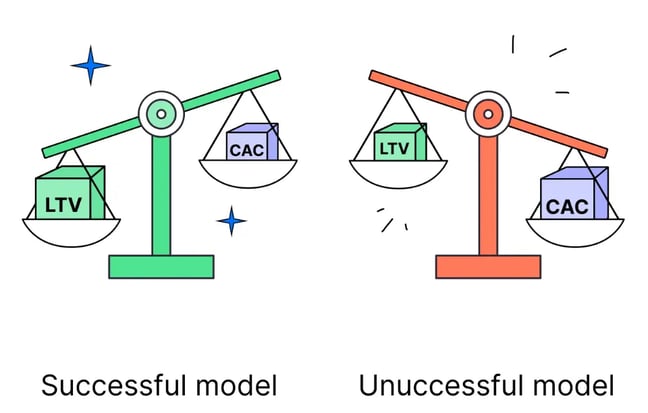 Image source: weld.app
Image source: weld.app
This company should work on reducing its Customer Acquisition Costs. If you are in a similar position, check out this article to know about the top 15 tactics and strategies to reduce CAC.
Final Thoughts:
To sum up, we can now conclude that comparing Customer Acquisition Cost and Customer Lifetime Value only makes us realize how indispensable they are to each other. Yes, they are two different metrics, they have different definitions, and they are calculated in different ways and using different formulas. However, tracking both of them has the same benefits, and they both work hand in hand to help you optimize the sales and profits of your eCommerce store.
 By
By
